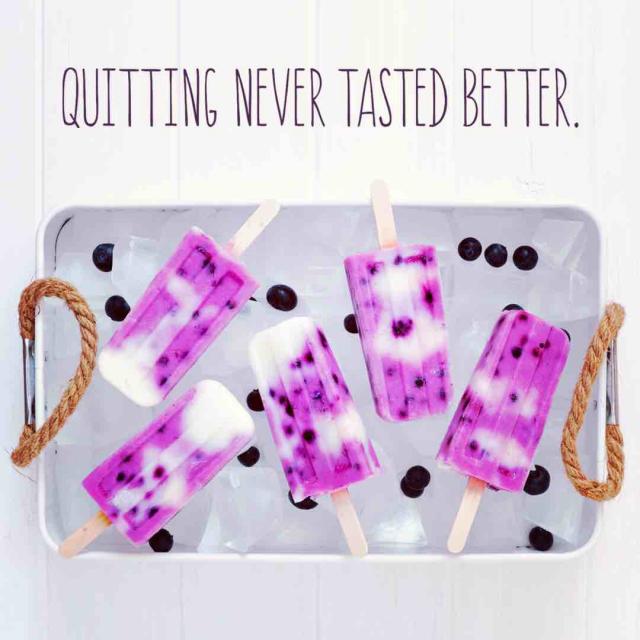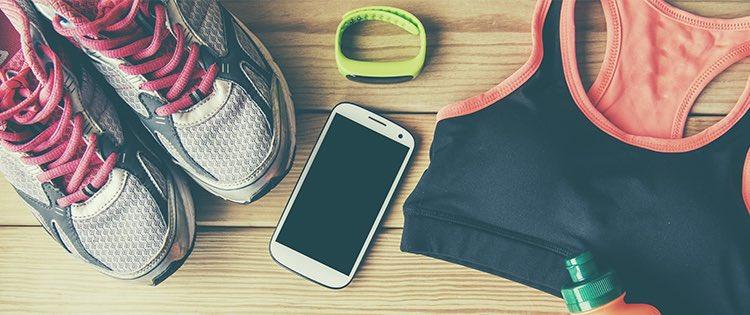Quitting smoking can give you the confidence to make other healthy choices, like eating better. Take control of your health and learn how to make changes toward a healthier diet.

After quitting smoking, some people say they feel hungrier, or snack to distract themselves from cigarette cravings and withdrawal. Quitting can give you the confidence to make eating healthy a part of your smokefree life. Learn how to make easy changes to your diet.
Set Healthy Eating Goals
You don’t have to change your whole diet at once. Think of changes that are reachable, positive, under your control, and specific. For example, “Cut up veggies and fruit in the evenings so I can take them in my lunch the next day,” or, “Eat a meatless dinner once a week, swapping veggies for the meat.” Here are a few other goals that might work for you or give you ideas for your own:
- Make half your plate a variety of different colored fruits and vegetables.
- Make half the grains you eat whole grains.
- Choose a variety of lean protein foods.
- Eat smaller portions.
- Drink water instead of sugary drinks.
- Eat some seafood every week.
- Prepare meals at home that consist of whole (unprocessed) foods.
Reward yourself when you reach each goal. It will give you something to look forward to. Avoid using food as a reward. Treat yourself with extra time spent with a friend, a hobby you’ve wanted to try, or an activity that gets you moving. Or combine rewards, like taking a yoga class or going for a bike ride with a friend.
Plan for Healthy Meals
With a little planning, you can make dishes that are filling, healthy, and tasty. Think about your meals for the upcoming week and how much time you’ll have to make them. Go shopping with an ingredient list and try to stick with it. Pick items from the outer edges of the store, where they usually stock fresh and unprocessed foods.
You can make healthier versions of your favorite dishes without losing the taste:
- Add spices and herbs instead of sauces.
- Bake or grill meat, poultry, or seafood.
- Roast veggies, meat, seafood, or poultry with a non-stick cooking spray or a small bit of olive oil.
- Sauté food using a non-stick vegetable spray, a small amount of broth, or a tiny bit of vegetable oil.
Learn the Label
When you’re shopping, try to limit the amount of packaged foods you buy—they usually have hidden sodium (salt), saturated fats, or sugars. Even foods labeled “natural” or “healthy” can be hiding sugar by calling it different names, like high-fructose corn syrup, barley malt, and dextrose. Before you buy a packaged food, look at the Nutrition Facts label first. It helps you know what’s inside, manage portions, and stay healthy. Learn the important parts of the Nutrition Facts label:
- Servings: The label shows the serving size and the number of servings in the package. When it comes to smaller packages of foods, one package is not always just one serving.
- Calories: The label shows the calories per serving and sometimes the calories per package. Calories are a measure of how much energy you get from a food serving. Eating too many calories per day is linked to overweight and obesity.
- Ingredients: The label lists several nutrients that can have an impact on your health. The nutrients listed first are the ones people generally eat enough—or even too much—of.
- % Daily Value (DV): The % DV tells you the percentage of each nutrient in a single serving, in terms of the daily recommended amount.
Remember: The information on a Nutrition Facts label is based on 2,000 calories a day. You may need to eat less or more than 2,000 calories depending on your age, gender, activity level, and whether you’re trying to lose, gain, or maintain your weight.
Serving Size & Portion Control
A portion is the amount of food that you choose to eat for a meal or snack.
A serving is a measured amount of food or drink, such as one slice of bread or one cup (eight ounces) of milk.
When people are given or choose larger portions, they often eat and drink more than their bodies need. Choosing smaller portions is an important step in eating healthy. Try these tips to help you control portion size at home or when dining out:
- You can start to recognize serving sizes by measuring out one cup, one-half cup, or one ounce of some different foods into the plates, bowls, glasses, and cups you usually use.
- Eat your meals on a smaller plate. It can reduce the number of calories and make you feel satisfied.
- Measure single servings of your favorite snacks and store them in bags or food storage containers.
- Wait 10 minutes before going back for seconds. You might not want them after all. If you do go back, add veggies or fruit.
- At a restaurant, ask for a take-home container and put half your meal in the container to save for later.
Eat Mindfully
Many people use food in the same ways they used cigarettes—to deal with stress or boredom, reward themselves, pass time, or help them be social. After quitting smoking, some people snack more often because it keeps their hands and mouth busy (even if they’re not hungry). When you eat mindfully, you’re aware of what’s happening with you and what’s around you right in that moment—like noticing the colors, smells, flavors, and textures of your food.
Take time to enjoy your food. Eating slower is healthier, and when you slow down, you’re also more likely to feel when you’re full. Try turning off the TV and putting your phone away while you eat. Going gadget-free helps you pay attention to the details of your food. You might notice tastes you otherwise would have missed.
Track It
Tracking your food in a diary can help you:
- Be aware of what, how much, when, and why you are eating.
- Eat mindfully by making notes about what you were doing or feeling at the time.
- Find where you can make healthy changes, like avoiding mindlessly munching and filling up on empty calories.
- See patterns of overeating or healthy eating.
- Identify overeating triggers, like celebrating holidays or experiencing a bad mood.
Don’t focus too much on the details. What’s important is that you track what you eat consistently. Try not to be discouraged if you have some days when you haven’t eaten the food or portions you planned. Your food diary is a helpful tool for a healthier lifestyle, now and in the future. It doesn’t have to be handwritten—you can even download free smartphone apps to help you track.






